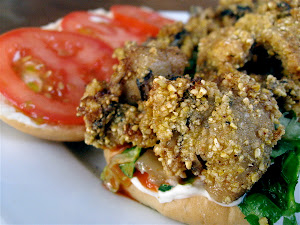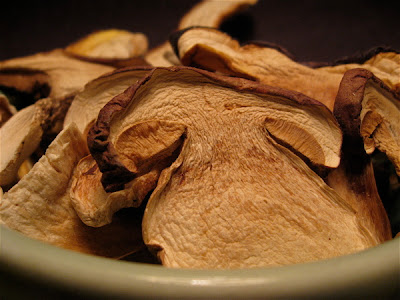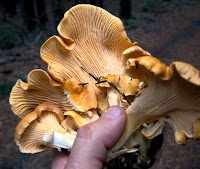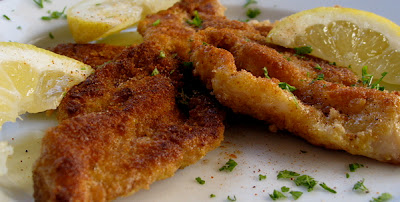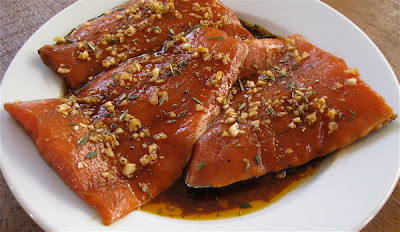
With a heavy heart (and salivating chops) I defrosted the last of my silver salmon this afternoon. According to my laundry marker scrawl on the shrinkwrap, this fish was caught September 9th, a Sunday. I actually remember that day, because I caught two silvers within a span of 15 minutes. It had been a lazy Sunday and I didn’t show up at the beach until right before low tide, which was around noon. The sun was out, but it was windy, with uncharacteristically large waves crashing on the cobbles. I had to take my place at the end of the line, far from the point, and, I was sure, far from the sweet spot. Because it was Sunday few of the regulars were around, just a bunch of weekend warriors tossing their lures out and hardly bothering to reel them back in. They didn’t expect to catch anything, I could see that right away. They were hiding from chores and honey-do lists.
Just then I saw an interesting sight through my polarized lenses: plain as day, a pod of silvers zipped by in the curl of a wave mere yards offshore, fin to fin like a squadron of Blue Angels in tight formation. I turned to the guy next me. Am I seeing things? He couldn’t summon the energy to answer and robotically cast his line way over the salmon, fifty yards out to sea (this was better than painting the garage, that’s for sure). A few minutes later and the squadron was back. I put my lure in front of the pod, just a few yards out. A fish peeled off the group and hammered it in less than a foot of water. Seconds later I had a six-pound silver on the beach.
The guy next to me was surprised. “Wow, you got one,” he said, as if we were all assembled there for some obscure reason that had yet to be revealed to us. Five minutes later and I had my second. A limit.
I guess we ate one of the two fish for dinner that night and froze the other for later. Now is later. The last of my freezer full of silver salmon.
In truth, this one has probably been in the freezer longer than is optimal. Three months, no problem. Almost five months? That requires my emergency “freezer burn marinade.” Besides masking the burn without compromising the tender salmon flavor, it’s ridiculously easy to make, taking about 30 seconds, including the time to rummage through my cabinets: one part Mongolian fire oil, two parts roasted sesame oil, and soy sauce to cover. Chopped garlic and ginger (or, in this case, rosemary) give it extra zing—and a couple minutes more prep time.
Such a marinade encourages a Pan-Asian presentation (I know, I know, we’ve seen enough of this sort of thing around these parts lately, but you work with what you’ve got). My usual sides are julienned vegetables—zucchini, squash, onions—sautéed in the same marinade, and jasmine rice or cous-cous. A salsa of diced red pepper, red onion, mango, and cilantro also pairs nicely.
Like this:
Like Loading...
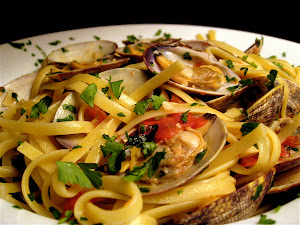 NEVER WAS A show-stopper so easy to prepare. Linguini with Clams, or Pasta alle Vongole in Italian, has the hallmarks of a classic dish: fresh shellfish glistening atop a feathery bed of pasta with accents of red tomato and green parsley to draw the eye.
NEVER WAS A show-stopper so easy to prepare. Linguini with Clams, or Pasta alle Vongole in Italian, has the hallmarks of a classic dish: fresh shellfish glistening atop a feathery bed of pasta with accents of red tomato and green parsley to draw the eye.
